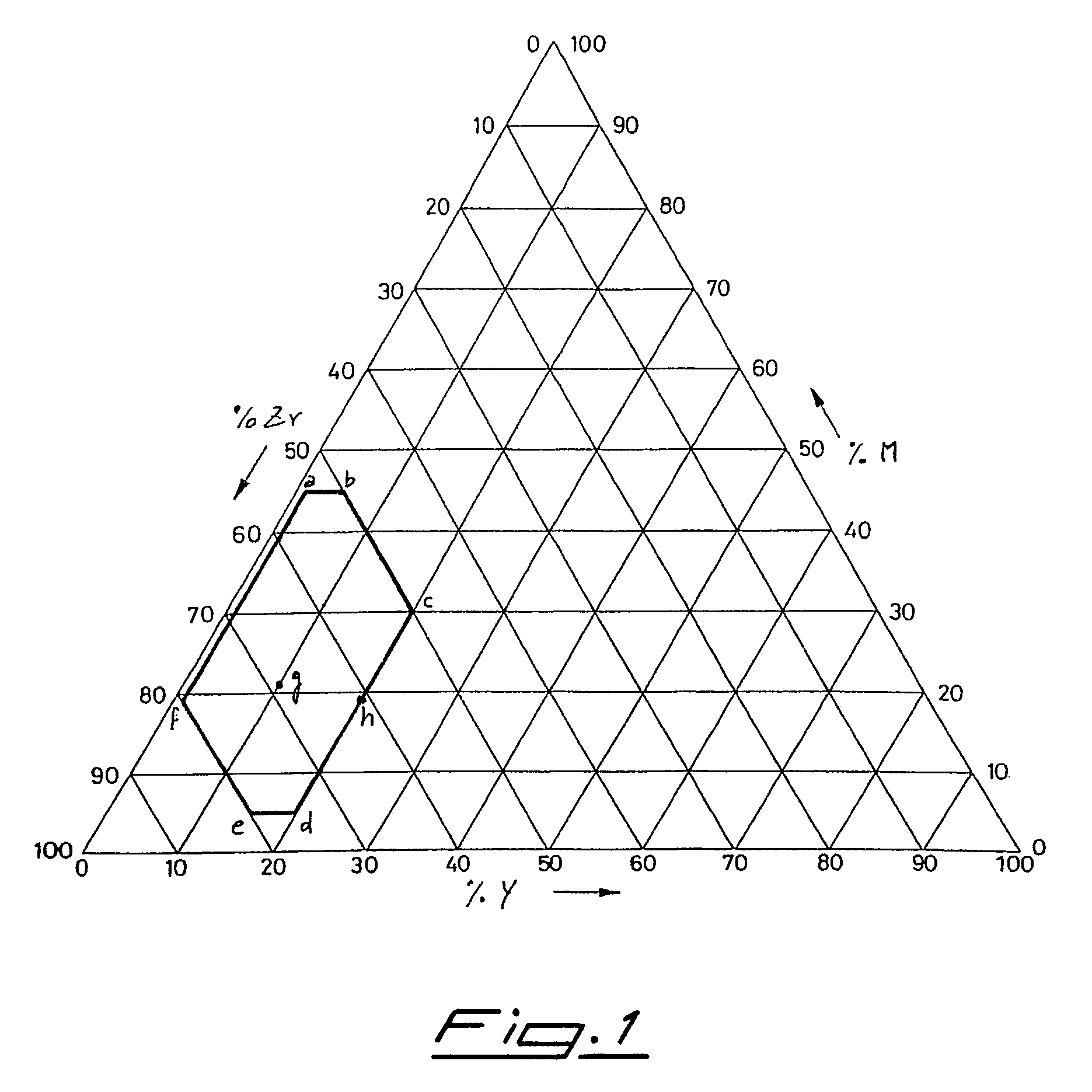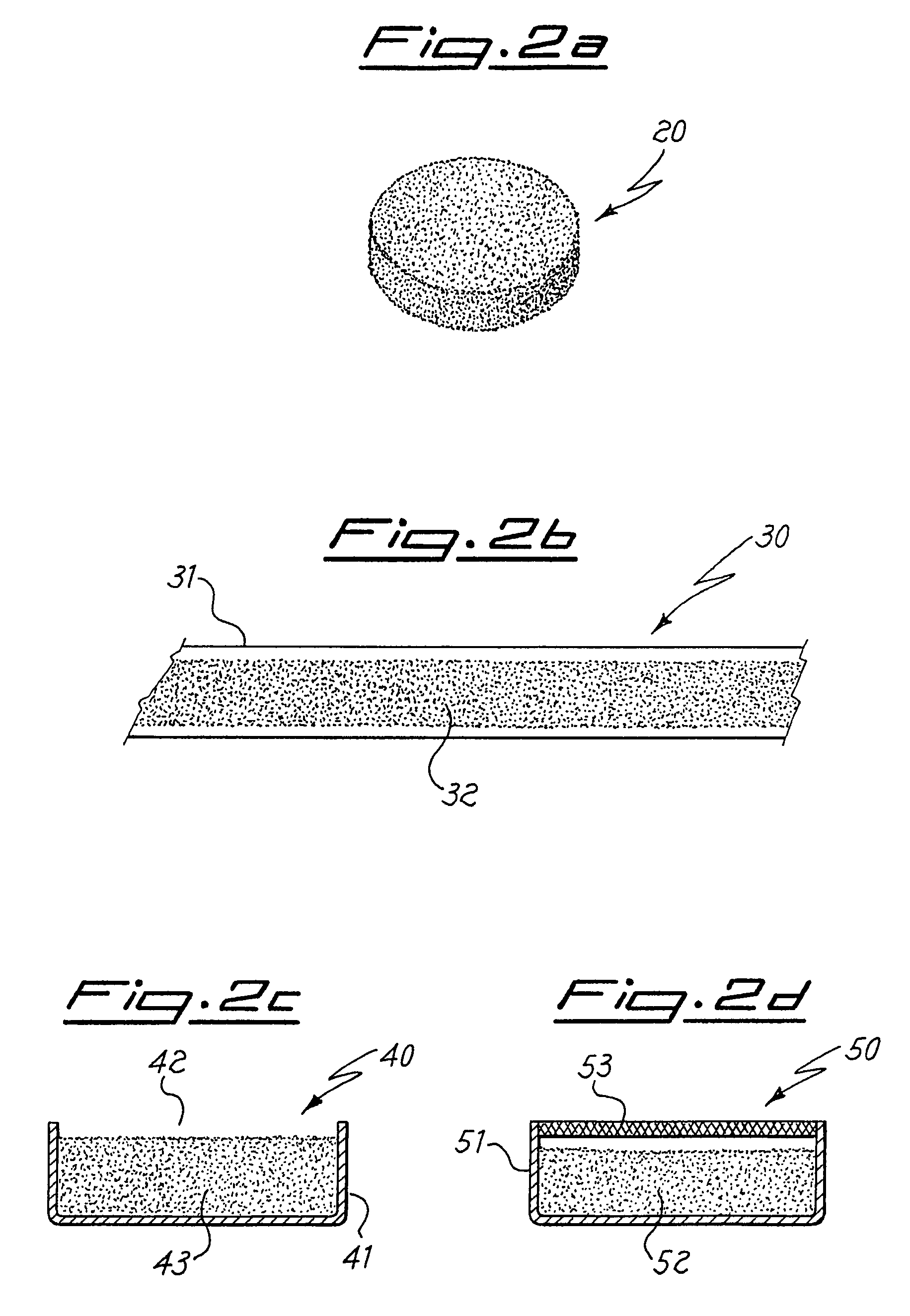Non-evaporable getter alloys for hydrogen sorption
a technology of evaporation getter and alloy, which is applied in the field of evaporation getter alloy for the sorption of hydrogen, can solve the problems of not being suitable for any application, not being able to meet the requirements of any application,
- Summary
- Abstract
- Description
- Claims
- Application Information
AI Technical Summary
Benefits of technology
Problems solved by technology
Method used
Image
Examples
example 1
[0032]This example describes the preparation of several alloys of the invention.
[0033]A series of alloys is produced starting from the component elements in powder form, weighing the powders in the desired ratio as given in the following table, that reports the weights in grams for each element and the nature of element M for the different samples:
[0034]
TABLE 1Sample no.Metal MZr (grams)M (grams)Y (grams)1Fe6921102Fe6119203Fe6520154Fe6426105Fe7416106Mn7020107Cr77.512.5108Al75.514.5109V632710
[0035]The powders are mixed and poured into a water-cooled copper crucible of an arc furnace under an atmosphere of 3×104 Pa of argon (so-called “cold-earth” technique). The temperature reached by the mixture during melting is of about 2000° C., temperature that is maintained during about 5 minutes. Since the preparations take place under conditions of a high thermal gradient, in order to enhance the alloy homogeneity any ingot melting is repeated four times. The ingots obtained by cooling after ...
example 2
Comparative
[0038]This example is directed to the preparation of a sample of an alloy made of zirconium, cobalt and misch-metal (misch-metal is a commercial mixture of lanthanum and Rare Earth metals). The features and preparation of this alloy are described in U.S. Pat. No. 5,961,750.
[0039]80.8 g of zirconium, 14.2 g of cobalt and 5.0 g of mischmetal having an approximate weight percent composition 50% cerium, 30% lanthanum, 15% neodymium and the remainder 5% of other Rare Earths are weighed. The procedure of Example 1 is repeated preparing also in this case a set of identical pellets. This sample will be referred to as sample 10 in the following.
example 3
Comparative
[0040]This example is directed to the preparation of a mixture having the same overall weight percent composition of sample 1 of Example 1, but formed of powders of an alloy of zirconium and iron only with yttrium powders.
[0041]The zirconium-iron alloy is obtained as in Example 1, starting from 69 g of zirconium and 21 g of iron, both in powder, melting the powders, allowing them to solidify, milling the ingot thus obtained, and retrieving the fraction of particle size comprised between 40 and 105 μm by sieving. Then, 10 g of powdered yttrium having the same particle size are added to the powders thus obtained; with this mixture of powders a set of identical pellets are prepared as described in Example 1. This sample will be referred to as sample 11 in the following.
PUM
| Property | Measurement | Unit |
|---|---|---|
| particle size | aaaaa | aaaaa |
| particle size | aaaaa | aaaaa |
| particle size | aaaaa | aaaaa |
Abstract
Description
Claims
Application Information
 Login to View More
Login to View More - R&D
- Intellectual Property
- Life Sciences
- Materials
- Tech Scout
- Unparalleled Data Quality
- Higher Quality Content
- 60% Fewer Hallucinations
Browse by: Latest US Patents, China's latest patents, Technical Efficacy Thesaurus, Application Domain, Technology Topic, Popular Technical Reports.
© 2025 PatSnap. All rights reserved.Legal|Privacy policy|Modern Slavery Act Transparency Statement|Sitemap|About US| Contact US: help@patsnap.com



